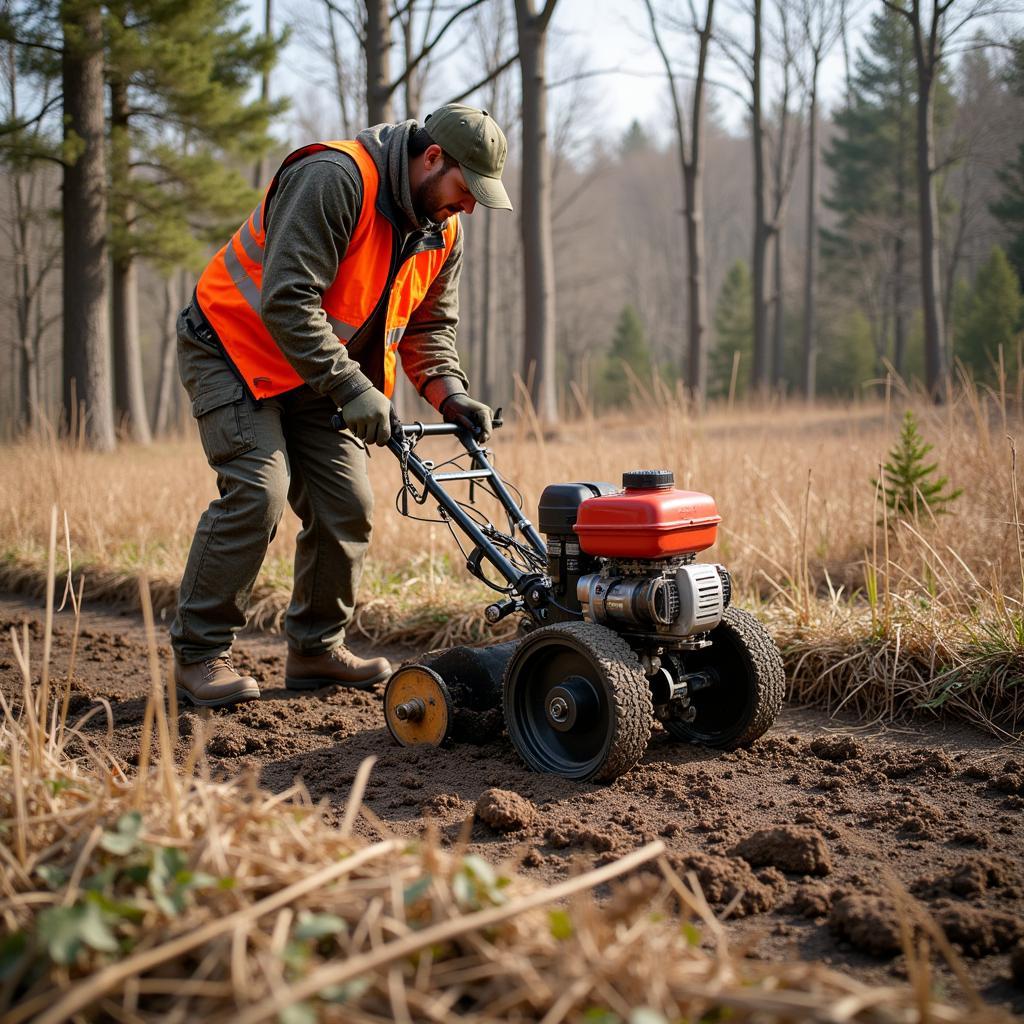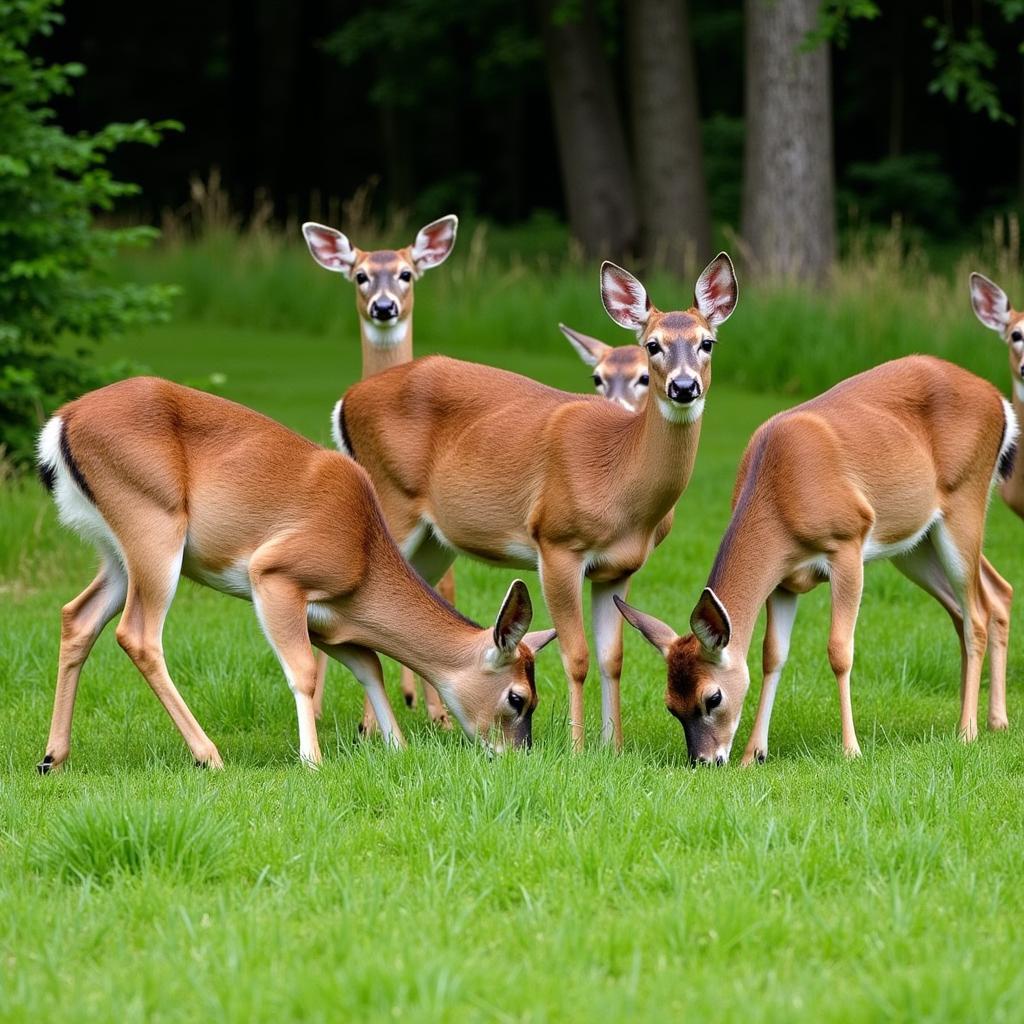Rye Grain Food Plots offer a fantastic and cost-effective way to enhance your hunting grounds, attracting deer and other wildlife. They provide vital nutrition, especially during the challenging winter months when natural food sources are scarce. Understanding the nuances of planting and maintaining these plots is key to their success and ultimately, a more rewarding hunting experience. Let’s dive into the world of rye grain food plots and explore how you can make the most of them.
Winter food plots for deer are essential for their survival and help hunters manage their hunting grounds effectively. Rye grain stands out as a preferred choice among experienced hunters due to its resilience, nutritional value, and attractiveness to deer. When planted correctly, rye grain food plots can become a bustling hub of wildlife activity, providing an ideal location for observation and hunting. Planning your rye grain food plot involves a few key considerations, including site selection, soil preparation, and timing.
One vital aspect to consider when establishing rye grain food plots is the selection of the right location. Ideally, the plot should receive ample sunlight and be situated near a water source. Also, consider the proximity to bedding areas and existing trails used by deer. A well-placed plot will not only attract more deer but also provide them with a comfortable and secure environment. This careful planning ensures the plot is easily accessible for the deer and offers a sustainable food source. This makes the area more attractive for the deer and increases your chances of a successful hunt. You can check our guide on winter food plot mix for more detailed information.
Preparing the Soil for Rye Grain Food Plots
Proper soil preparation is crucial for the successful establishment of a thriving rye grain food plot. Testing the soil’s pH level is the first step, allowing you to amend the soil with lime or other nutrients if necessary. Next, till the soil thoroughly to remove any existing vegetation and create a loose seedbed for optimal germination. A well-prepared seedbed ensures good seed-to-soil contact, promoting faster and more even germination.  Preparing soil for rye grain food plot
Preparing soil for rye grain food plot
Planting and Maintaining Your Rye Grain Food Plot
The ideal time to plant rye grain for a fall food plot is late summer or early fall. This allows the rye to establish a strong root system before the first frost. Broadcasting or drilling are the most common planting methods. Ensure even seed distribution and cover the seeds lightly with soil. Regular monitoring and occasional fertilization will help maintain a healthy and productive plot throughout the season. A thriving rye food plot offers numerous benefits to both wildlife and hunters.
Choosing the Right Rye Grain Variety
Selecting the right rye grain variety is essential for optimizing your food plot’s potential. Consider factors like cold tolerance, disease resistance, and overall yield. Consulting with local experts or agricultural extension services can provide valuable insights and recommendations for the best varieties suited to your specific region and climate.
“Choosing a locally adapted rye variety is key to maximizing your plot’s success,” advises Dr. Sarah Miller, a wildlife biologist with over 20 years of experience. “It ensures the rye is well-suited to the specific environmental conditions and can withstand the local climate.”
Timing Your Rye Planting
Planting at the optimal time ensures your rye grain establishes well before winter. This allows for strong root growth and maximizes forage availability during the colder months. Check your local agricultural resources for the best planting window in your region.
Watering and Fertilizing Your Rye Grain Food Plot
While rye is relatively drought-tolerant, adequate moisture during the early stages of growth is essential. Water the plot regularly if rainfall is insufficient. A well-balanced fertilizer can also boost growth and nutrient content, further enhancing the plot’s attractiveness to deer. You might also find our guide on triticale food plot helpful.
Benefits of Rye Grain Food Plots
Rye grain food plots offer a multitude of benefits, not only for the wildlife they attract but also for hunters. They provide a consistent and reliable food source, promoting healthy deer populations. This, in turn, creates excellent hunting opportunities. Furthermore, food plots can help concentrate deer in specific areas, making them easier to observe and manage. The establishment of a rye food plot is a rewarding investment for any dedicated hunter.
“A well-maintained rye grain food plot can significantly improve deer health and antler growth,” explains John Williams, a seasoned hunter and wildlife enthusiast. “It’s a win-win situation for both the deer and the hunter.”
 Deer feeding on a rye grain food plot
Deer feeding on a rye grain food plot
Conclusion
Rye grain food plots are a valuable tool for enhancing hunting grounds and attracting wildlife. By following these guidelines on soil preparation, planting, and maintenance, you can create a thriving food plot that will provide a consistent food source for deer and other animals throughout the season. Investing in a rye grain food plot is an investment in your hunting success. Now, you’re well-equipped to establish your own rye grain food plots and enjoy a more rewarding hunting experience! For other winter options, take a look at our winter food plots for deer guide.
FAQ
- What is the best time to plant rye grain for a food plot?
- How do I prepare the soil for a rye grain food plot?
- What type of rye grain is best for food plots?
- How much rye grain should I plant per acre?
- How do I maintain a rye grain food plot?
- What are the benefits of a rye grain food plot?
- Can I plant rye grain with other forage crops?
Need assistance with organic food bars or rye food plot information? Contact us! Phone: 02437655121, Email: [email protected] or visit us at: 3PGH+8R9, ĐT70A, thôn Trung, Bắc Từ Liêm, Hà Nội, Việt Nam. We have a 24/7 customer service team.